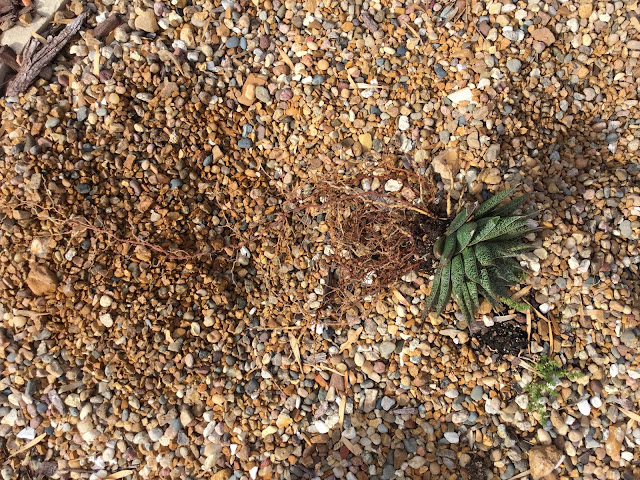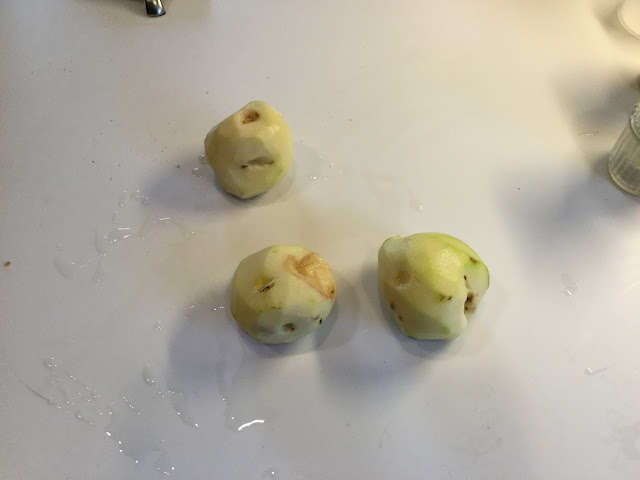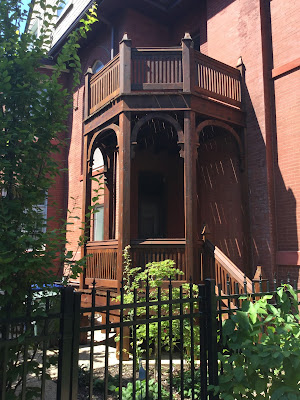Our favorite holiday!
Today it is cloudy and cool with the highs in the low 50's. I prepared the succulent bed for Winter. Several of the succulents I planted last Spring recommended not exposing them to frost to prevent "scaring". I'm not sure what scaring looks like, but maybe I'll find out.
The first transplant was the Snow Pole Cactus (Espostoa Ianata). As you might remember, it is native to mountainous Peru at elevations of 4000 to 7000 feet and supposedly will form a branched, tree-like columnar to 6' in height. It is described as prone to scaring by frost. My observations since planting it back in early April made me doubt whether or not the plant was alive. To my amazement, the plant has developed a nice root system.
Next came the Kosmik Kaktus is a Haworthia species from South Africa. This plant is not hardy in our zone and also has the suggestion not to expose it to full sunlight. I put this plant in the southeast corner of the succulent bed so that it would get some shade from the nearby Japanese maple. As with the Snow Pole Cactus, this plant also has developed an extensive root system. In fact, its roots stretched across the length of the bed.
The Golden Sedum (Sedum aldolphii) was stated to be hardy in USDA Zones 8-11. It was described as a spreader with star shaped flowers. It has not spread much, if at all, and I did not witness any flowers.
The blue Desert Gems Cacti are described as "indoor" plants, so I assume it will not like our winter lows. When I transplanted the plant, I found little or no evidence of root development.
One cactus I left undisturbed. I had no information on it, not even an full name...just cactus. If it has grown over the past six months, it is not overly apparent. Similarly, I had a poorly described sedum. This plant has propagated. One of its "branches" had actually put down roots away from the mother plant. I clipped this branch and potted it with its roots, leaving the majority of the original plant in the bed. I also did not disturb the chicks and hens. I think this plant is hardy in our zone.
At some point in the Summer, I planted a Kalanchoe daigremontiana, a.k.a, devil’s backbone, mother-of-thousands, alligator plant, or Mexican hat plant. It is a succulent plant native to southwest Madagascar. For a long time, not knowing what this plant was, we referred to it just as the "mystery" plant. T discovered its true identity.
I came across a leaf of this plant when living down in the French Quarter. That leaf has propagated enormously. It drops thousands of plantlets (seeds) during the Summer which grow everywhere. The only way I have found kill this plant is our cold winter weather. In fact, if it were not for its inability to survive our winter weather, this plant would be invasive. Therefore I am not overly concerned about all the baby plants that crop up during the Summer. I brought the major plants inside. The specimen I put in the succulent bed seems happy. I left it out to die this winter. I'll plant more in the Spring.
So, in summary, I brought in seven succulents to spend the winter in our sunroom.
After two days of drying, today I put the okra seeds I harvested on Sunday into a empty capers jar, labeled and put into the door shelf of the refrigerator.


















































